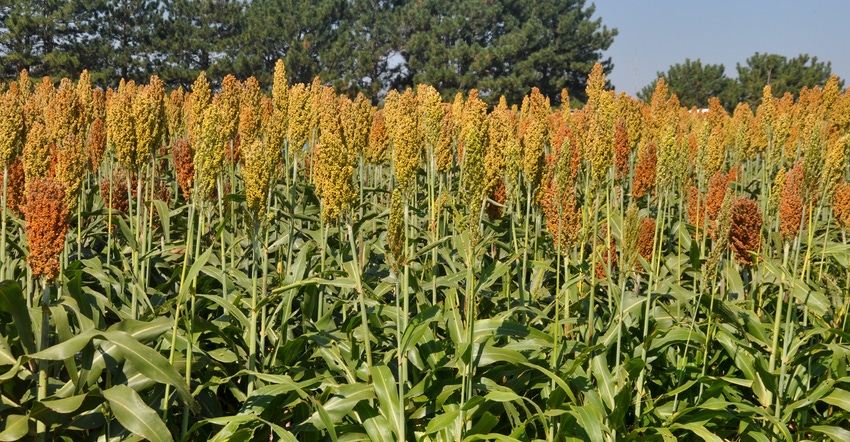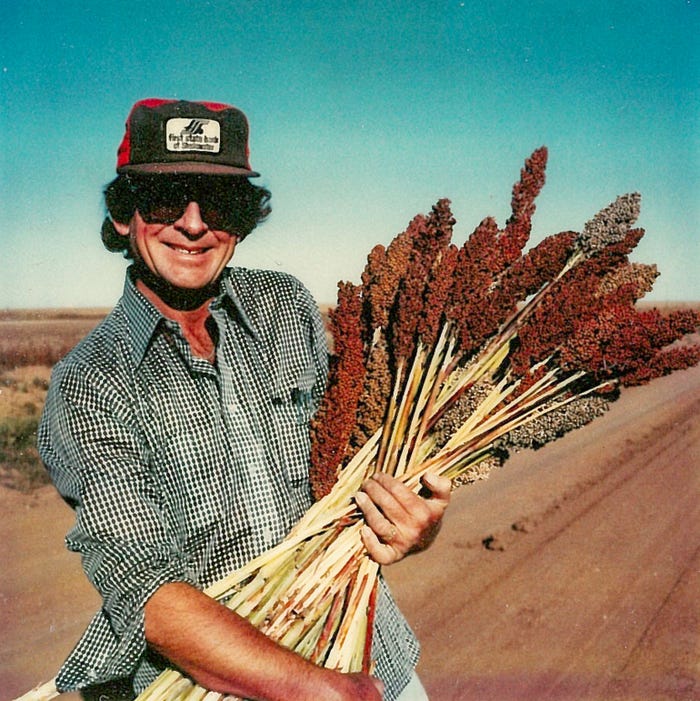September 5, 2017

By Chris Cogburn
Until about a year ago, our yard at National Sorghum Producers was cared for by an older gentleman. Although his age probably qualifies him for the term “elderly,” he is anything but. The energy with which he mowed, edged and fertilized the yard — often before the office even opened — set the tone for the pace of work at NSP in the summer. I have heard it said the man cared more about our yard than his own hair, and the wild gray tufts protruding from beneath the old Dekalb hat he often wore when mowing supported this statement.
In the mid-1990s, Dr. Bruce Maunder retired from Dekalb, where he had spent much of his career leading sorghum breeding efforts. Slowing down in retirement was not an option as a world-class work ethic and a strong desire to see the sorghum industry improve drove Maunder to give back. Enticed by an office and an opportunity to continue mentoring promising young students and industry professionals, he joined the staff of NSP as research adviser in the late 1990s.
 GIVING BACK: Dr. Bruce Maunder has dedicated his life to the sorghum industry. He started his career as a breeder in the early days of hybridization, and after retirement served as the maintainer of the lawn and continued his role as a mentor to students.
GIVING BACK: Dr. Bruce Maunder has dedicated his life to the sorghum industry. He started his career as a breeder in the early days of hybridization, and after retirement served as the maintainer of the lawn and continued his role as a mentor to students.

Maunder has seen it all. He was awarded his Ph.D. from the University of Nebraska just after sorghum was first hybridized, so he was on hand for complete producer adoption of hybrid sorghum. That the process took just five years (roughly 25 years elapsed between hybridization of corn and complete adoption) is a testament to Maunder’s dedication to his product.
Maunder was in Wall, Texas, for the July 1968 field day held just after the greenbug first appeared in sorghum. He was also on hand for an exodus of private industry investment from sorghum, and his leadership during that time ensured future investment would have a home. Through it all, Maunder has remained focused on moving the sorghum industry forward — often one student at a time.
Because of his leadership, the National Grain Sorghum Foundation is able to award $5,000 in scholarships per year, and the groundwork has been laid to do much, much more in the future. While this financial support is vital, the hundreds of students Maunder has personally — and often unbeknownst to everyone except the mentee — advised will attest his guidance was just as important. The staff at NSP agrees. From supporting staff members for key leadership positions to educating young staff members on sorghum, Maunder’s passion for mentorship runs deep.
Twenty years after joining NSP as research adviser, Maunder is still mentoring and personally supporting scholarship programs in a number of states, but he has stepped back from his daily responsibilities at the office. Given his legacy of mentorship, it is fitting his successor in that role is Larry Lambright, another sorghum industry giant who led sorghum breeding efforts at Dekalb and Chromatin. Lambright worked for Maunder as an undergraduate and was eventually given a full-time job.
Maunder has dedicated his life to furthering the interests of sorghum producers and the industry that supports them. Join me in thanking him for his leadership.
Cogburn writes from Abernathy, Texas. Find him on Twitter @nspchris.
You May Also Like




